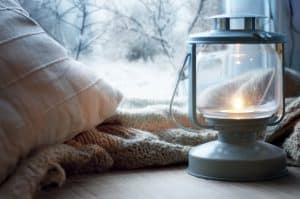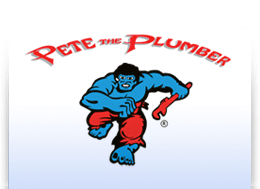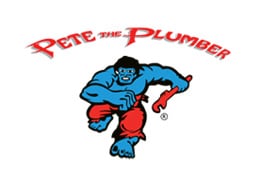Homeowners should ready to prepare your Calgary home for winter and making sure their homes are warm and cozy. The right preparation can make all the difference between an enjoyable season or painful experience that’s full of trouble with frozen pipes, flooded basements – even mold growth. These 5 tips will help you prepare your Calgary home for the cold weather for the years to come.

1- Inspect Your Furnace and Vents
An important step to prepare your Calgary home for Winter is replacing your furnace filter. While minor home heating problems are relatively common, it’s important to have a reliable channel to get them fixed quickly, efficiently, and for the long term.
The vents are responsible for distributing hot air throughout your home. They must be correctly sealed and insulated if you want to maintain efficiency and conserve energy.
Generally, it is recommended to change your furnace’s air filter every 90 days. This will guarantee that your Alberta home is heated through the winter, while maintaining your energy costs low.
A professional inspection of your furnace and vents can help you identify other issues. If your furnace is relatively new, was installed correctly by a licensed professional, and is regularly serviced, you may already be operating at maximum efficiency.
One way you can save on your energy bills is by replacing an old furnace and heating system with a new, more efficient system.
If you have a 30-year old furnace that breaks down, we can usually fix it. But you may want to consider a replacement furnace, in order to:
- Reduce energy bills
- Reduce future problems
- Lower future maintenance and repair bills
- Lower the noise output
- Increase safety
- Free up space in your basement (new systems are smaller!)
- Increase your peace of mind!
If you need a new furnace or heating system, we’re one of Calgary’s largest purchasers of heating equipment.
2- Quick HVAC improvements
Up to half of your household energy is likely to go into heating it during winter and cooling it during summer. So, to become more energy-efficient, start with the furnace or HVAC system.
The term HVAC stands for heating, ventilation, and air conditioning. This system is designed to help provide climate controls for a home, business, or another type of facility. There are many different types of HVAC systems out there, and each has a unique design.
As far as the common HVAC systems go, they typically utilize a set of coils for heating, and a system of refrigerant for cooling. For homes in and around places such as Calgary or Alberta, the temperature can fluctuate.
Those chilly nights call for a lot of heat. And despite the cool climate, the warmer months can make air conditioning a necessity.
If you need a new furnace or heating system, we’re one of Calgary’s largest purchasers of heating equipment.
3 – Install a Smart Thermostat
In the winter months, it is important to make sure you are using as little energy possible so that your bill doesn’t skyrocket. One way of cutting down on costs and maintaining proper temperatures at all times without having a furnace running constantly throughout those cold days or nights. A smart thermostat allows you to reduce the temperature in your home at pre-set times, even when you don’t need it.
Instead, the easiest way to save on energy costs is by making sure your thermostat setting changes automatically throughout the day and fitting your preferences through day and night, helping you to prepare your Calgary home for winter.
Upgrade to a smart thermostat that will save you money and energy by making its own decisions about when the heating should be turned up in your home.
4- Keep Your Vents Open
When preparing your Calgary home for winter, make sure you inspect your home’s heat sources. Blocked vents will reduce the efficiency of heating and could lead to higher energy bills. Make certain that wall registers stay uncovered too-if they’re available on each level or sectional area where gas appliances operate best such as kitchens with dishwashers often use.
Blocked air filters make your heating system less efficient and reduce the air quality in your home.
If dirt and debris are blocking filters, they need to be cleaned or replaced during a system inspection or professional maintenance visit.
5 – Direct Heat to High-Traffic Rooms
Close the doors and vents in unused rooms in the home (like the garage, crawlspace, attic and storage sheds) and direct heat to the most-used rooms.
This may sound obvious but it’s surprising how many homes are heating redundant areas. There is no point to heat all rooms equally if some are not used.
10 Extra Tips to Keep Your Home Warm
Your HVAC system is the obvious place to start when it comes to energy efficiency—but there are other ways to keep your house warm and save on energy bills.
Following are 10 of the best suggestions. Many of these you can do yourself if you have the time, a few tools, and a little DIY experience:
Find the Drafts
On the next windy day, light a stick of incense, a small candle or tea light and place it on windowsills, door jams, vents etc. Check the flame. If it flickers or the smoke blows away, you have drafts.
Use Proper Sealants
Drafty windows that let cold air in and warm air escape are energy guzzlers. You can prevent heat flow from living spaces to attics, garages, basements, and the outdoors by sealing window frames with silicone caulking or foam sealant. This can save up to 30 percent on your heating bill.
Upgrade the Windows
Old windows are less likely to insulate your home from the cold. This winter may be the time to invest in new windows for greater energy efficiency in the years ahead. Storm windows, windows with Low-E coating or even triple-glazed windows with a high-efficiency rating will reduce heat loss and keep the home’s heat in.
Use Drapes and Blinds
A cheaper solution to new windows is simply to use drapes and blinds to prevent drafts and reduce heat loss through the windows.
Use Natural Solar Heating
Blinds should be drawn up and curtains open in daylight hours for the south- and west-facing windows so that direct sunshine can heat the home naturally.
Use Clear Plastic Sheeting
As an even cheaper alternative to drapes and blinds, fitting clear plastic sheeting to your windows can add insulation, reduce cold drafts, and allow you to turn down the heating.
Weather-strip the Doors
Doors are another obvious place to watch for icy drafts. Add weatherstripping around the exterior doors to improve their seals and keep the exterior cold at bay. This should include the pet door built into your main door to the yard.
Use Draft Stoppers
Using a door draft stopper (like a rolled-up towel) can also prevent drafts with minimal effort. For electrical outlets and switches, use draft gaskets.
Reverse the Ceiling Fans
Does your ceiling fan have a reverse setting for winter? If so, the fan blades help to draw down the heat from the ceiling and prevent it from escaping through the roof or walls.
Add a Humidifier
A humidifier can help you stay comfortable at lower temperatures and may allow you to turn your thermostat down. Houseplants also add natural humidity to the ambient air in your home if you don’t want to install a humidifier.
Call a Calgary HVAC professional
Over the course of a year, small energy-saving changes can add up to substantially lower bills and less of a carbon footprint.
The solutions outlined above can save energy at a minimal cost. If your HVAC or furnace system has been in use for 15 years or longer, consider upgrading for improved efficiency and lower bills.
And, remember, for advice with any HVAC system, furnace, or plumbing system issue, call Pete the Plumber.

